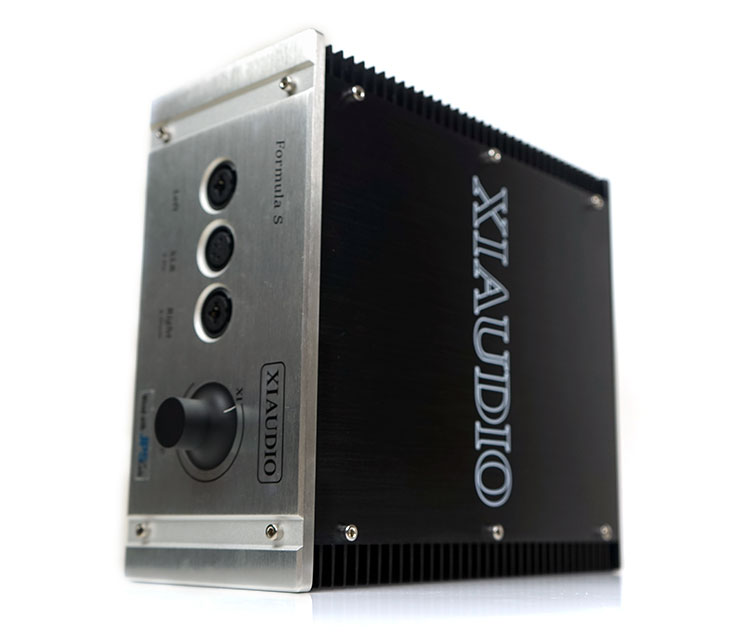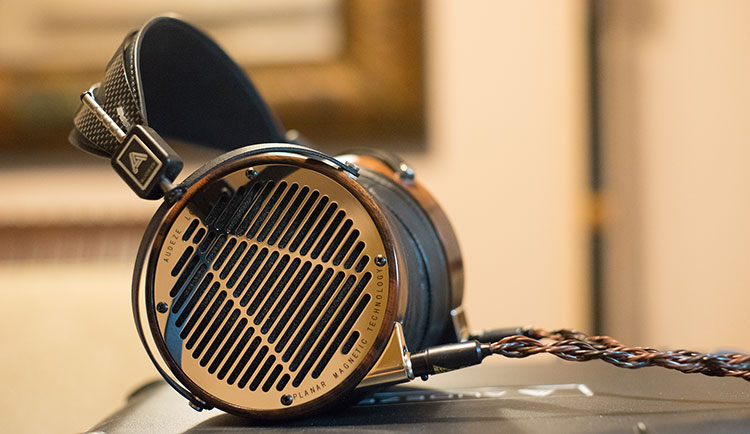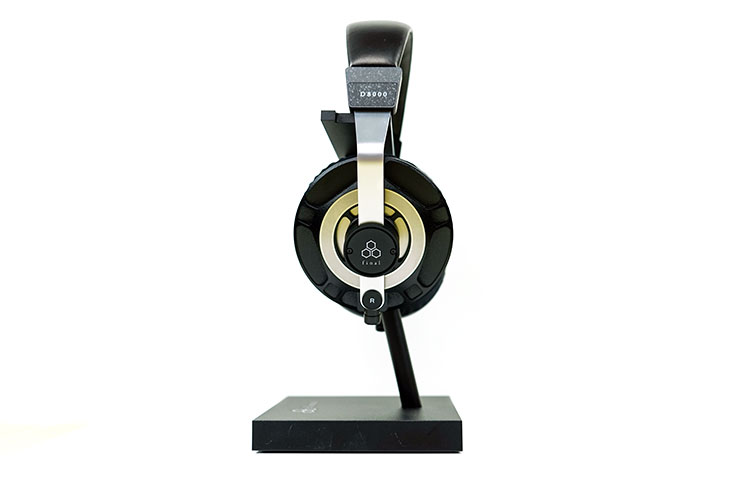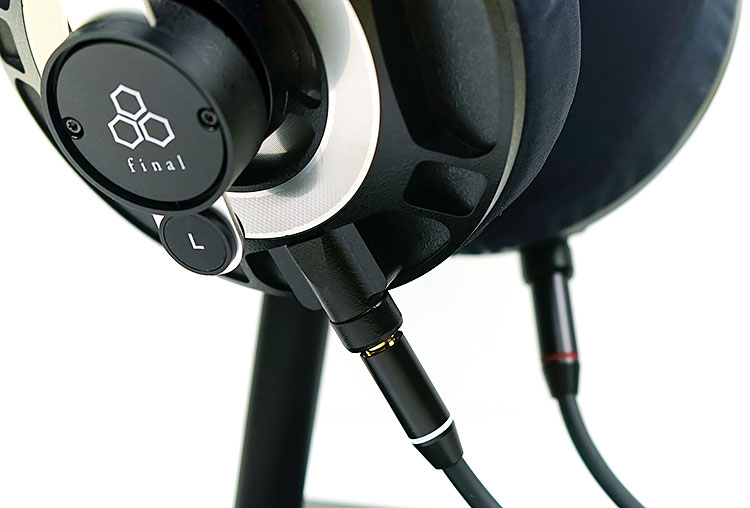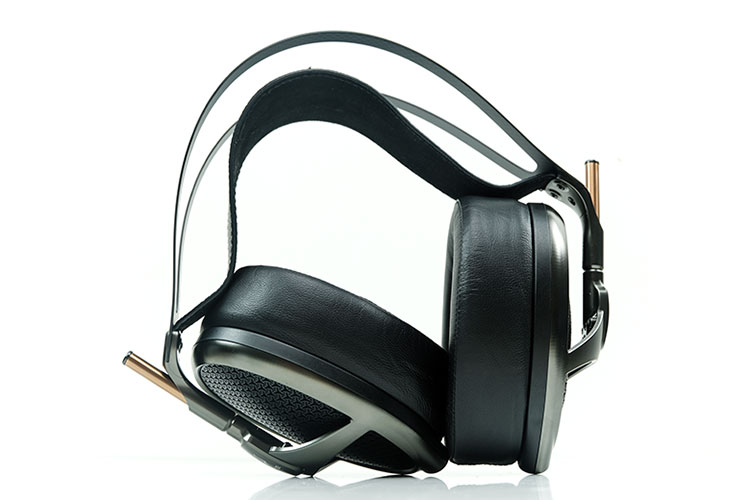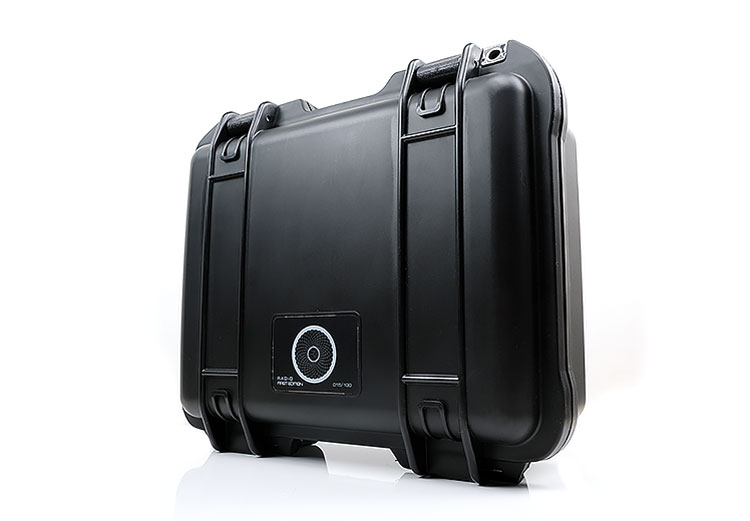Sound Impressions
Summary
The RAD-0 resonates in the same way the D8000 impressed me in terms of being an absolute riot to listen to for my old rock and modern dance hall anthems.
Like the D8000, the RAD-0 is not a reference headphone in the traditional sense. It is tuned for listening and enjoying your music at a very high level. On that score, the overall balance and seductive timbre are just brilliant.
Pair this with a punchy amp and resolving DAC and you get one heck of a presentation with a strong emphasis on a solid but controlled pure planar bass response and slightly intimate mids with excellent vocal performances.
The one thing that stands above all others is just how well Alex has tuned the treble of the RAD-0. Quite a lot of planar headphones deliver uneven treble performances and some overcompensate by dulling it down to avoid peakiness or overtones that upset the harmonic balance.
Not so with the RAD-0. Its treble is both energetic yet wet enough and smooth enough to avoid any accusation that it is peaky, too thin, or uneven sounding.
This excellent treble tuning in turn delivers an excellent instrumental timbre that is both exciting with just enough bass/treble contrast and ‘sweet’ enough for excellent long-term listening potential.
I commented in my original CanJam Singapore 2019 report that the RAD-0’s treble sounded better than Audeze’s tuning on the LCD-4 and I stand by that now 5 months later.
Staging
The RAD-0 is a little on the closer side compared to the likes of the Final D8000 and the LCD-4 and around the same staging dimension with a bit more headroom than the Meze Empyrean (leather pad option).
I find it mimics more of a live chamber or hall feel rather than the grander arena-type staging the likes of the Hifiman Susvara and the HE1000 V1 deliver.
The tuning brings some aspects forward and throws other variables a little further back and to the side, particularly with vocals. It does not have the same weight or sub-bass presence as the larger driver LCD-4 so the sense of absolute low-end power and rumble is not as strong.
Instead, the RAD-0 brings the bass response a little further forward with a bit more perceived punch alongside a vocal positioning that’s slightly ahead of its instrument positioning.
Instrumental separation on the RAD-0 is excellent, nothing soft or mushy here, aided by that excellent treble tuning. As a result, imaging never sounds congested or the tuning dark, not in the slightest.
Bass
Whilst not as elevated as the D8000 or quite as “rumbly” as the LCD-4, the RAD-0 low-end is physical, dense, and very pure sounding to my ear. It does seem to have a slight mid-bass lift so not as flat sounding as the Empyrean.
Instead, it has a solid punch and excellent turn of pace to its low-end tuning and enough warmth and body to give lower-pitched instruments an authoritative sound.
You could argue it has a classic Audeze approach to its bass tuning with more emphasis on ensuring instruments have a solid bass fundamental and excellent texture rather than on overwhelming sub-bass kick and boom.
As such the performance is more balanced than bombastic and does an excellent job of preventing smear from creeping into the lower-mids.
Mids
Beautiful timbre and surprisingly good instrumental separation. Vocals are to the fore though not quite as pushed as the Empyrean. The instrumental body is also just a little lighter in tone compared to the very rich sustain of the Empyrean timbre.
I would contend it has a slight sweetness to tuning overall rather than sounding overly warm or mellow. The harmonic balance is exquisite, to be honest, with just a shade more even than odd but nothing you could ever debate as being rounded or dull, not one iota.
Much of that sweetness comes from the top-notch treble tuning that delivers plenty of articulation and good headroom but without tipping the instrumental timbre to a harder unnatural sound. Even with the forward vocal positioning, you won’t find the RAD-0 becoming sharp or sibilant in its delivery.
Lower-mid instrumental tones, around 500hz-1kHz instruments, have a very satisfying planted feel from that excellent pure planar bass performance. It is not quite as powerful sounding as the D8000 with its tilted sub-bass but it’s incredibly solid sounding.
Check out Dee Snider’s “So What” and the opening 30 seconds for that acoustic bass guitar presence and purity in its mix. It sounded almost perfect with the RAD-0 tuning.
Treble
Ironically, we always talk about how good planar headphones have such excellent distortion-free bass responses and speak a little less on the treble tuning. Usually, because there is something a little off in the harmonic balance with some peakiness or companies pull it back to get a smoother sound.
The RAD-0, however, has none of that with perhaps one of the most impressive planar treble tunings I have heard to date. There is no obvious peaking save perhaps some gentle lower-treble and upper-treble nudges for headroom and percussion timbral snap but it does have energy and articulation.
Most of all it sounds wonderfully natural with an almost perfect harmonic balance. That, in turn, feeds into the RAD-0’s instrumental timbre to give it that sweet and engaging sound. Something I appreciate.
I suspect there is some slight fading in the upper-most treble or at least the bumps are fairly even in terms of amplitude in the FR and never outshining the mid-range vocal prominence. As a result, the percussion timbre is solid, slightly wet, and with good body but with enough snap and bite to sound realistic.
This is something I had difficulty with on the LCD-4 with its slightly dominant upper treble tone and whilst the D8000 went a long way to correcting that slight sharpness it is the RAD-0 treble that sounds the most engaging to date.
Synergy
Efficiency
The RAD-0’s rating is fairly efficient for a full-sized planar at 29Ω and 98dB SPL. Compared to the likes of the 200Ω LCD-4 it will get louder faster and is the easier of the two to drive.
Meze’s Empyrean and Final’s D8000 are much closer in terms of current/voltage performance with medium efficiency amps such as Monoprice’s new Cavalli-designed Liquid Platinum tube amp and Violectric’s powerhouse V281 requiring virtually no volume adjustment between the RAD-0 and those two alternatives.
Also, amps with impedance selectors such as Auris Audio HA-2SE, Euterpe, and Cayin’s iHA-6 should be switched to their low-impedance settings.
Anything above 50Ω in terms of output resistance I found the RAD-0 started to sound soft on the low-end with a bit more bloom. Beyond, at 150Ω onwards (Auris Audio amps), the dynamic range got sucked out of the RAD-0 and it lost a bit of sparkle.
Synergy
You will not need huge amounts of power for it and instead, you can focus more on synergy and amp matching. That being said, like most solidly built planar headphones, the more voltage and current you can throw at it the better it sounds. Also, your choice of DAC may influence the presentation.
Neutral
For example, neutral DACs such as a Qutest plugged into Auris Audio’s Euterpe or the Oppo’s sadly discontinued ES9038PRO Sonica delivered a lot more clarity and instrumental separation into the RAD-0 mids than warmer full-bodied DACs such as the Yulong DA10. However, the bass sounded a little more neutral, especially when paired with relatively neutral amps.
If you have it, then the Chord M Scaler makes a big difference with a far more vivid listening experience on the RAD-0, even with neutral DACs such as the Qutest.
Musical
You can mitigate neutrality and go for something more planted or musical sounding with amps such as the Violectric V281 or even Burson’s excellent Class A Fun amp.
Here I found the RAD-0 to sound weightier, slightly warmer with an excellent bass fundamental. The sound of the V281 was not quite as open or as spacious as something like the Xi Audio Formula S but it did pack more of a punch with a bigger vocal presence.
I preferred the Formula S pairing with the RAD-0. It felt a little pacier with better dynamic range with a neutral DAC behind it. I did lose a little bass weight but the overall clarity from top to bottom was more satisfying. This is not the pairing though for outrageous fun which the RAD-0 is excellent for.
The final musical combo I quite liked was the new Cayin iDAC-6 MKII in combination with the Monoprice Liquid Platinum (Cavalli designed). Slipping the iDAC-6 MKII to its vacuum tube buffer combined with the punchy Liquid Platinum sound was as about as ‘fun’ as you can make the RAD-0 sound.
The sound was a bit more intimate than the Formula S pairing but it was a lot more lively with plenty of mid-bass punch and good treble shimmer. Sort of like the V281 pairing with a bit more treble presence. A good pairing for a lot fewer greens.
Select Comparisons
Audeze LCD-4
$3995
Technical
Though there are variations now, the LCD-4 is technically Audeze’s flagship open-back planar headphone. It does cost considerably more than the RAD-0 also at $3995.
It uses a larger 106mm transducer, (RAD-0 is 66mm), with a super-thin Nano-Scale Uniforce diaphragm, Neodymium N50 double-sided magnets, and their patented Double Fazor magnet technology.
Design
The LCD-4 finish is a classic wood and chrome metal grille/connector finish with matt black gimbals and short adjusting blocks for the headband. In comparison, the RAD-0’s dye finish is going to stand out a lot more with multiple variations including a classic wood and chrome finish similar to the Audeze styling.
I like the more “pop-punk” feel of the RAD-0 design but will admit the Audeze’s have a slightly more refined finish. However, the pivot and headband blocks of the RAD-0 feel and look much stronger than the LCD-4 designs. Perhaps, in the long run, the RAD-0 blocks might prove to be more durable.
Weight
The LCD-4 weighs in at a huge 735g making it the heaviest headphone I have ever put on my head. The RAD-0 is heavy at 650g but not as heavy as the LCD-4 and dimension-wise it is the smaller of the two headphones.
The LCD-4 does have some weight-saving features meaning it could have been a lot heavier. Its carbon fiber wide headphone band is much lighter than the RAD-0 equivalent using a headphone pressure adjusting strap compared to the copious amounts of memory foam under the RAD-0 band.
The wedged pads on both are quite similar in application only the RAD-0 uses a slightly smaller version in keeping with its smaller cup size.
Comfort & Fit
The downward pressure dissipation on the LCD-4 is marginally lighter and it does not clamp as much as the RAD-0 either so I would class the LCD-4 as a more relaxed fitting. However, that weight means it tends to move around a little on your head with rapid movements whereas the RAD-0 is more secure.
Connectors
The LCD-4 uses angled mini-XLR connections which I prefer a bit more to the recessed 3.5mm sockets of the RAD-0. They do add considerable weight to the LCD-4 but the angle is more extreme meaning cables stay out of the way. You might struggle with aftermarket on the RAD-0 given how recessed those 3.5mm sockets are.
A thin barrel such as those found on Hifiman 3.5mm sockets will work but wide barrels are a no-go.
Performance
The LCD-4 is rated at a fairly hefty 200Ω and a manageable 97dB SPL compared to the 29Ω and 97dB SPL of the RAD-0. That’s quite a driving difference and you may notice that on some amps, particularly those with impedance switches such as Auris Audio’s HA-2SE and their new Euterpe tube amp/DAC.
The Euterpe, for example, will play the LCD-4 sound much better with high impedance activated and the RAD-0 sounds more optimal on the low setting, (logically enough). For the HA-2SE there is no 200Ω setting and the difference is more nuanced.
I prefer the LCD-4 on the higher 300Ω. It sounds juicier on the low end and a bit more vibrant compared to the 150Ω setting which sounded very flat. With the RAD-0 you need to right down to the 50Ω setting to sound optimal. 100Ω has a bit more bloom but beyond that up to 600Ω it is a definite mismatch.
For almost every other fixed impedance amp stage output the RAD-0 is the easier of the two to drive though both can scale quite nicely as most planar headphones are open to doing.
Tuning
The tuning of these two headphones has two fundamental differences or strengths as I see it. The sweetness of the RAD-0 treble versus the enhanced sub-bass weight and depth of the LCD-4 bass response.
Now the RAD-0 can go low and superbly musical in that respect with some excellent presence and a punchy mid-bass.
However, below 80Hz to 20HZ, the LCD-4 has a bit more presence and solidity for me and thus sounds the deeper of the two. Not surprising really when you consider the LCD-4 has the bigger driver. The RAD-0 is a bit more closed-in but punchier in the mid-bass by comparison.
On the flip side, the RAD-0 treble is smoother, wetter, and has a better harmonic balance. The LCD-4 treble tuning still sounds a little uneven and edgy for me with a peakish 7k and some latent energy around 10k producing a harsher or clashing harmonic overtone.
You can hear that in some vocals with a bit more sibilance and a slightly hard-edged percussion pitch that can sound a little off or too forceful at times.
The RAD-0 is a little more intimate on the mids but with that wetter smooth treble and less of an edgy upper mids instrumental timbre. It sounds a lot easier on the ear for my taste. Female vocals still have a natural sibilance of recorded as such but the RAD-0 handles it much better, far less distracting than the LCD-4.
That level of intimacy is not replicated as much on the LCD-4. Mids are a little more distant and open sounding, especially for female vocals due to that long slow dip from 1-4k on the LCD-4 FR.
Final D8000
$3999
Technical
The D8000 is also priced higher than the RAD-0 at $3999 and is Final’s flagship headphone. It uses a slightly smaller driver at just 50mm but it is built from the ground up using their own Air Film Damping System or AFDS for short.
The use of air film between the magnets acts like an air buffer and cushions the diaphragm in such a way as to reduce the level of contact with the magnets to produce a more even and coherent bass response.
Form Factor
The form factor of the D8000 is closer to the RAD-0 than the LCD-4 with a single headband design using memory foam. It is also lighter a 523g compared to the RAD-0 at 650g. However, the design is not as articulated as the RAD-0 with far less pivoting on the gimbal. There is just enough so it is not rigid like the new Hifiman designs.
Comfort
The biggest problem of the D8000 is the comfort level. Despite the greater weight, the Rad-0 feels more comfortable on your head than the D8000 for a few reasons. First, the headband does not have huge amounts of memory foam on the strap.
Now, this does not create a lot of pressure spots on the top of your head like you would think. Rather, the D8000 suffers from too much downward pressure on the ears because of its very large fitting, even with the band on its smallest setting.
Combined with very pliant memory foam pads that move around inside a loose fabric cover the D8000 tends to push down on my ears way too much.
The RAD-0 might have a little more pressure spotting on my scalp but the side clamp and thicker traditional wedge protein leather pads mean there is no pressure on my ears and they feel more secure. That is a big advantage over the D8000 for long listening sessions.
Performance
The D8000 is rated at 60Ω and 98dB compared to the RAD-0’s 29Ω and matched SPL of 98 dB. Both are relatively easy to drive on amps around 1W per channel into 32Ω loads and reasonably fine for current demand.
The gap between these two is negligible on current with very little pot adjustment on most amps. With the Monoprice Liquid Platinum tube amp on unbalanced powered by a fixed-line out from Cayin’s new iDAC-MK 2, there was no adjustment required. It has a healthy 1.13W into 32Ω for the RAD-0 and just a tiny bit less than 1.13W, (56Ω load) for the D8000.
However, with Auris Audio’s two tube amps on the 50Ω setting or low impedance, the D8000 sounded marginally more dynamic and louder. I can only presume that the 60Ω rating is more in tune with the impedance control of the Auris Euterpe and HA-2SE than the RAD-0.
Tuning
Bass
The D8000 delivers a higher level of bass and treble contrast making it a very exciting sound signature. I profess I love how it sounds with hard rock and classic thrash metal. It has a super solid bass fundamental and a type of treble that is lively but without the overtone that the edgier LCD-4 provides.
The RAD-0 also rocks but in a slightly different manner. Its bass is not as humped as the D8000 and delivers a more classic linear with just a hint of a bump around 80-100Hz but nothing overcooked.
The D8000 is unusual for a planar as it is more elevated from the sub to mid-bass. You get some warmth and a punchy delivery and also a more forward and intimate bass performance from the RAD-0. The D800 aims for more depth, slightly further back, and plenty of power.
Mids & Treble
Both have a fairly even midrange up to around 1-2k with a slight dip out of the mid-bass into the lower mids. You notice it more on the D8000 because of its elevated bass performance. The RAD-0 has a slight edge here in upper mids timbre with fuller-sounding and more forward female vocals.
The D8000 dips a lot more from 2-4k than the gentler RAD-0’s dip so female vocals are a little further back for me.
That helps keep them on the ‘easy to listen to’ side because the D8000’s treble is a lot more emphasized than the smoother sweeter tone of the RAD-0 treble. RAD-0 vocals and percussion timbre are the wetter of the two with a slightly richer euphonic tone.
Euphonics on the D8000 timbre occur closer to the lower mids with a bit more odd-harmonic overtones coming in towards the lower treble.
Staging
Staging wise the D8000 is the bigger sounding with more depth and perceived height. The RAD-0 delivers something a bit more intimate, slightly less treble energetic but perhaps more balanced with more mids ‘fill”.
Meze Empyrean
$2999
Technical
For a few hundred bucks more you could be looking at the Meze Empyrean, the company’s flagship the isodynamic hybrid array open-back headphone.
This is a unique driver design using a continuous trace but with two unique shapes. At the top, is a curved line switchback trace that focuses on the low-end delivery (bass), and a circular pattern at the bottom, is designed to focus on the mids and highs.
The hybrid aspect of the design is in the magnet arrangement with symmetrical placements of the neodymium magnets on either side to maximize the efficiency of the isodynamic magnetic field. Ideally, the diaphragm will operate in a uniform and consistent manner as a result. This is critical given the dual trace design of the diaphragm for both lows and highs.
The pads also have a magnetic principle in them that duals as a demagnetizing field back into the driver for additional efficiency as well as making the pads super easy to take on and off. The Empyrean also comes with two such pads that dramatically change the sound signature of the Empyrean.
Comfort
No question the Empyrean is the lighter and more comfortable headphone of the two. The Empyrean weighs in at 490g compared to the RAD-0’s 650g. The curved headband combined with the elongated cups makes for a beautiful fit.
The RAD-0 is still the more secure of the two and fairly comfortable but there is a lot more reliance on clamping between the two headphones to get that tight fit. You will feel the weight difference between the two.
Build
The build on the Empyrean is more eastern-influenced for me with a hint of ‘Persian’ in those tight grille spacings. The RAD-0 is more traditional in shape but punkier and brighter in appearance. The two look incredibly different and may appeal to different audiences on a visual level.
Performance
The Empyrean is rated at 31.6Ω and 100dB. Compared to the 32Ω and 98dB SPL of the RAD-0 there is only the tiniest bit of current demand difference due to that 2dB in SPL. Using both the Auris Audio Euterpe and the Monoprice Liquid Platinum tube amps the Empyrean was marginally louder but not to the extent you would reach for the dial to turn it down.
Both of these amps are delivering roughly 1W into a 32Ω load and it sounded plenty to my ear. Both headphones are easy enough to drive compared to the likes of the LCD-4 and proof positive of modern planar builds shedding that image that they all require nuclear plants to be driven properly.
Tuning
The is a very different emphasis here on how to tackle the treble tuning and how forward the mids are in relation to the treble. The Empyrean has an unusual and very forward 2-4/5k midrange which pushes vocals quite far forward. The RAD-0 has a more traditional planar dip from 2-4k though not as extreme as the D8000 or LCD-4.
Vocals
I consider the RAD-0 vocals to be more forward than those two but the Empyrean is even more of a vocal performer than the RAD-0.
Given there is almost no lower-mid dip either on the Empyrean and a treble that fades away compared to the RAD-0 it sounds velvety, and euphonic but also slightly darker.
Not shelved down at all but just enough roll-off to allow that elevated vocal to sound rich, “big” and tremendously detailed without bringing in a ton of treble edginess. Both male and female vocals are to die for on the Empyrean tuning to be perfectly honest.
The RAD-0 has a bit more treble/bass contrast. It is livelier and perhaps the more exciting of the two for rock, EDM, and metal.
I also find the harmonic balance to be slightly on the sweet side but not quite as rich as the Empyrean and not the same vocal emphasis either. The enhanced treble adds a touch more bite and presence to percussion. A little more snap and energy if you will but not as much body as the Empyrean tuning.
Low-end
On the low end up to lower mids both have a relatively linear typical planar bass performance with the RAD-0 perhaps having the slightly punchier mid-bass of the two. I suspect there is just a tiny bit of emphasis there compared to the Empyrean but not by a huge amount.
The velour pads on the Empyrean will bring in a lot more mid-bass warmth and emphasis, perhaps more so than the RAD-0 but still not as punchy for my money. I much prefer that more neutral and tighter leather pad sound on the Empyrean for bass control.
Our Verdict
The RAD-0 is in my top 3 headphones I have tested and heard to date for this year. It has a beautifully balanced sound signature with a very impressive treble tuning and a sweet-sounding instrumental and vocal timbre.
I could listen to this for hours in much the same way as I class the D8000. It is one of those headphones that is just a pure blast of fun and technical competence to make anything that rocks, well rock that bit harder.
If you are a fan of the Black Crowes or that analog Les Paul tube amp-infused guitar workout session then the Rad-0 is perfect. Southern-infused rock and old-school modern sleazy rock like Vains Of Jenna sound tailor-made for the Rad-0 vibe.
I wish I could tell you that it is a lightweight experience like the Empyrean or the MrSpeaker’s Ether 2 for listening to all that for many hours. It’s balanced and the design does a wonderful balancing job for its 650g weight on your head but it’s going to make its presence felt more than those two competing headphones.
It is secure, however, much more so than larger headphones like the awkward D8000 and I did find the RAD-0 much easier on the head than Final’s flagship.
Overall, this does not sound like a freshman flagship headphone but then again, Alex Rosson is no freshman in the headphone business. He knew what he wanted to achieve with this debut headphone and I think he has done that and then some. A worthy flagship in 2019!
Rosson Audio Design RAD-0 Specifications
- STYLE: OVER-EAR, OPEN-BACK
- EARPADS – HEADBAND: SUSTAINABLE
- CABLE: CONNECTORS – 3.5MM: LENGTH – 2 METERS
- TRANSDUCER TYPE: PLANAR MAGNETIC
- TRANSDUCER SIZE: 66 MM
- FREQUENCY RESPONSE: 20HZ – BEYOND AUDIBLE RANGE
- THD : <0.1%
- IMPEDANCE: 29 OHMS
- SPL: 98dB



